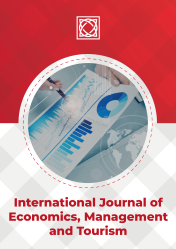HETEROGENOUS AGENTS AND INCOMPLETE MARKETS: AN EXPLORATION
DOI:
https://doi.org/10.46763/IJEMT2222007jKeywords:
Heterogenous agents, incomplete markets, Huggett economy, Krusell-Smith economy, Aiyagari modelAbstract
This paper will review the issue of heterogeneity of agents and incomplete markets in macroeconomics. Central idea of this paper is the notion that representative agent models were wrong turn for modern macroeconomics especially for general equilibrium model (some individuals are some are not liquidity constrained) and that central problems of macroeconomics cannot arise in representative agent models (debt, bankruptcy, asymmetric information) as has also being criticized by Stiglitz (2017).And finally main motivation for this paper were Achdou et al.(2022) who developed algorithm for “solving equilibria in Aiyagari–Bewley–Huggett economy” and Krusell-Smith (1998) comparison of economy behavior when incomplete markets (heterogeneous agents) and complete markets (representative agent) economy.

